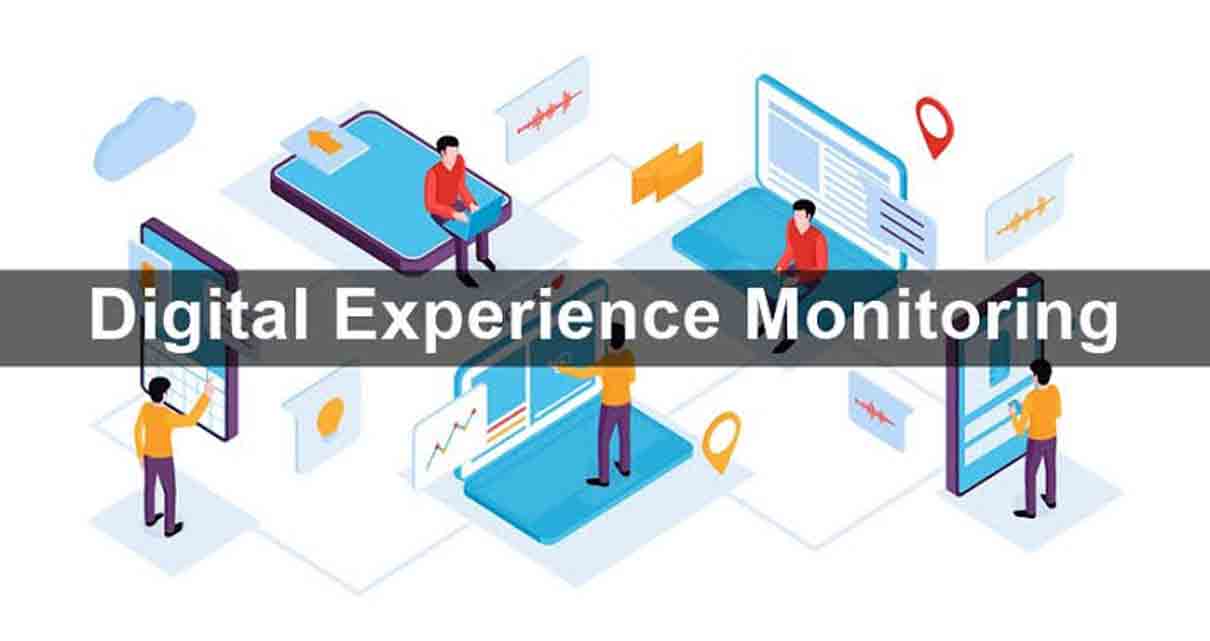7 Things To Consider the right digital experience monitoring tools. Digital experience monitoring or DEM is a study of performing operational experience and behavior of a digital agent, human or machine, about the application and service portfolio of the concerned organization.

As the business landscape in the present time is incorporating remote workers and distributed teams much wider than before, it is essential to determine if the digital user experience is seamless and coordinated. These aspects help to improve productivity and collaboration within an organization.
DEM promotes an optimum performance of critical cloud productivity and collaboration tools which leads to an improved UX. It focuses on web performance from the end-user’s perspective. DEM enables enterprises to detect the pertinent problems before they affect the customer’s digital journey. Most companies have deployed websites in their business to create valuable brand experiences.
Besides testing the front-end usability and design of the website, it is also essential to consider the back-end complexity. It is important to monitor as many elements that can affect the performance of applications and services. Digital experience monitoring includes a method to create this transparency, which helps enterprises take actionable insight to address performance issues before launch.
Digital Experience Monitoring tools data collection, storage, and analysis techniques to enable performance monitoring and optimization. It collects data from multiple endpoints and network devices via simulated user interactions. It uses non-relational database management systems (DBMS) for proper modeling and analysis for optimum data storage. Using an AI-based predictive analytics tool, it feeds upon the data collected from simulated user interactions for identifying trends and patterns to aid the admins in the decision-making process.
Choosing the right Digital Experience Monitoring tools
Real-Time Visibility
While choosing the right Digital Experience Monitoring tools, ensure that it should be to notify administrators about the outages and performance trends in real-time. It enables the admin to make informed decisions about disruptions as and when they occur. It should be able to provide complete and unified visibility into the enterprise’s digital experience.
The tool needs to combine Application Performance Monitoring (APM) and Network Performance Monitoring and Diagnostics (NPMD) to provide a merged view of your IT infrastructure and operations. Real-time visibility help to identify and mitigate issues which has a significant bearing on employee efficiency and UX.
Dashboard For A Consolidated View
DEM tool should have a dashboard to display the Quality of Experience (QoE) score. QoE score provides a real-time analysis of the digital experience of a website. Merging the performance and experience score on a single platform enables the administrators to identify the bottlenecks, delay, packet loss, error, and other issues in the website.
The dashboard should merge all KPIs and output to provide real-time identification of the app and end-user experience. It enables the admins to take prompt action before any issue can severely affect the customer experience.
Data Security
As the Digital Experience Monitoring tool gathers your sensitive corporate data for comprehensive data analysis, it should include a data loss prevention tool and other security solutions to protect it from undue exfiltration. Any loophole in the data management can make it vulnerable to leakage, and they can misuse it by unauthorized third-party. It can lead to severe loss in revenue and hamper your brand image. Hence the Digital Monitoring tools should adhere to data security best practices.
Compliance
Digital Experience Monitoring tool should control and audit performance and accessibility and effective regulatory compliance. Choosing a compliant DEM tool to facilitate processes and procedures that the website must have in place to comply with industry, legal, security, and regulatory requirement so that it adheres to best industry practices.
Automation
Choose a tool with automated capability to continuously assess the website and capture errors and details on page load, crashes, and network requests. It can perform redundant and repetitive tasks to run test operations to check how the web application delivers performance and usability.
Integration And Deployment
Depending on the complexity of your website or app infrastructure, choose a suitable DEM solution that can adapt to your unique business needs. You should be able to customize it so that it integrates easily into your existing workflow. Choose a solution that offers flexibility and scalability for continuous and improved monitoring of your website.
Cost And Expected ROI
The Digital Experience Monitoring tool should have end-to-end website and app monitoring capabilities. You can perform a cost-benefit analysis to assess the ROI of the DEM tool. Determine your budget and choose a tool accordingly.
To Conclude:
Digital experience monitoring significantly contributes to customer satisfaction and business reputation. To choose the right tool, take the points mentioned above into consideration.
